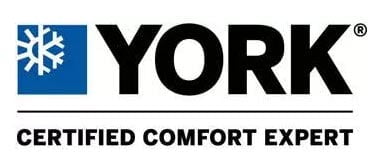HVAC Maintenance Tips
Here’s a list of handy tips for the do-it-yourselfer or for those who just want to know what their system needs for the best possible performance.
Just like your car, your home comfort system needs routine maintenance to keep it running at its best. Without regular servicing, heating and cooling systems waste energy and are more likely to break down. But with the proper attention, they can keep you comfortable year-round.
Below are some basic tips to keep your system running efficiently. However, these tips are not designed to replace annual servicing by a qualified York dealer.
Heating Equipment
Heat pumps and oil-fired furnaces and boilers need a yearly professional tune-up. Gas-fired equipment burns cleaner; it should be serviced every other year.
Step 1
A close inspection will uncover leaks, soot, rust, rot, corroded electrical contacts and frayed wires. In furnace (forced-air) and boiler (hot-water) systems, the inspection should also cover the chimney, ductwork or pipes, dampers or valves, blower or pump, registers or radiators, the fuel line and the gas meter or oil tank, as well as every part of the furnace or boiler itself.
Step 2
Next, the system should be run through a full heating cycle to ensure that it has plenty of combustion air and chimney draft. Contractors use smoke pencils to check for sufficient draft and also test the air for carbon monoxide.
Step 3
Finally, it’s time for the down and dirty task of cleaning the burner and heat exchanger to remove soot and other gunk that can impede smooth operation. For the burner, efficiency hinges on adjusting the flame to the right size and color, adjusting the flow of gas or changing the fuel filter in an oil-fired system. A check of the heat pump should include an inspection of the compressor, fan, indoor and outdoor coils and refrigerant lines. Indoor and outdoor coils should be cleaned, and the refrigerant pressure should be checked. Low pressure indicates a leak; to locate it, contractors feed tinted refrigerant into the loop and go over it with an electronic detector.










